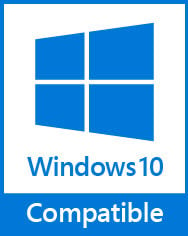![[Fixed] System Reserved Partition Not on SSD](https://cdn.techloris.com/app/uploads/2022/06/system-reserved-partition-not-on-ssd.webp)
[Fixed] System Reserved Partition Not on SSD
Before solving the missing System Reserved partition problem, you must first understand what a partition is and its functions. When installing Windows on a blank storage device after upgrading to Windows 7, a partition with the description System Reserved and a size of around 100 MB will be created as part of the disk. This partition will be made after the system drive and other required drives.
In Windows 8, the System Reserved partition is typically 350MB, whereas, in Windows 10, it is 500MB. When needed, you can expand System Reserved.
You can see the System partition in Disk Management because Windows doesn’t give it a drive letter when you install Windows, and it won’t show up in File Explorer as most other drives do, so boot files on it won’t be deleted or changed by accident. The partition is divided into two parts in general, namely:
- The starting files that BitLocker Drive Encryption uses – If you want to use BitLocker to protect your hard disk, Windows will boot from the files on the unencrypted System Reserved partition. The system drive is then decrypted, ensuring a successful boot.
- Boot Configuration Data (BCD) and Boot Manager Code (BOOTMGR) – After reading information from the Boot Configuration Database (BCD) stored at the startup files of the computer; the Windows Boot manager then begins loading the operating system from the system drive. It typically consists of two folders, Boot and System Volume Information, and two files, BOOTMGR and BOOTSECT.BAK. Therefore, the computer cannot boot if the partition is empty.
You’ll have a better grasp of the situation if you’re familiar with the significance and function of the System Reserved partition.
What Happens if the System Reserve Partition is Not in the Drive with Windows OS?
Things could get nasty if the System Reserved Partition is taken away from Disk Management. If this occurs, customers may be unable to update Windows to the most recent version. In the worst-case scenario, your system will not boot up, displaying the warning message that the Operating System is not found or boot failure.
Because this is a severe problem, it must be addressed. We’ll look at several troubleshooting techniques in this article to see if they can help you solve the problem.
What to do if the System Reserved Partition is Not Found on the Right Drive

- Your machine is currently running Windows 10
- Fortect is compatible with your operating system.
Recommended: To repair Windows Errors, use this software package; Fortect System Repair. This repair tool has been proven to identify and fix these errors and other Windows problems with very high efficiency.

- 100% safe as confirmed by Norton.
- Only your system and hardware are evaluated.
First Method – Mark Partition as Active in the Windows Disk Management Utility
- Press “Windows + R” on your keyboard and type “diskmgmt.msc” and hit enter on your keyboard or click “OK.”

- Right-click on the hard drive that is not detected by your system. In this example, we have the C Drive. Please note that the drive letter varies.
- Click on “Change Drive Letter and Paths.”

- Click “Change” on the next pop-up window.

- Assign a new letter for your drive and click “OK.” Restart your computer and check if the error message still occurs and if you can already boot successfully.
Second Method – Transfer the System Reserved Partition with the Windows Disk Management
- Press “Windows + R” on your keyboard and type “diskmgmt.msc” and hit enter on your keyboard or click “OK.”

- Choose the disk for the System Reserved partition. Select “New Simple Volume” from the menu that appears when you right-click on the free space on the drive. If there is no unallocated space listed, you can create some by reducing the size of an old system reserved partition or removing one entirely.

- Follow the prompts for the New Simple Volume and assign the appropriate volume size. Make sure to assign its drive letter format to the partitions.
- It is necessary to give the original System Reserved partition a drive letter for File Explorer to display it. Everything should have been copied from the previous System Reserved partition to the one just created, Boot folder, bootmgr, and BOOTSECT.BAK should all be included.
- Take off the drive letter newly created System Reserved Partition to make the partition bootable.
- Reboot your device to see whether it can boot properly. You can safely delete the old System Reserved partition if it boots successfully. You can launch the Startup Repair using a Windows system repair disc or bootable USB drive if it doesn’t.
Third Method – Repair the Boot Configuration Data (BCD)
The Boot Configuration Data (BCD) file stores boot configuration parameters, which determine how Windows should start up and are used to configure the operating system. If the BCD file is damaged or missing, Windows will not boot. The only way to rectify this issue is to rebuild the boot section.
- Restart your computer. If you don’t see the “Startup Settings” appear on your screen and go directly to your desktop, follow the steps below.
- Press the Shift key down and simultaneously press the Power button on your keyboard.
- You need to continue holding down the Shift key while waiting for the machine to power on.
- Select the “Advanced Options” button and click on “Command Prompt.”

- In the Command Prompt window, type in the following commands. Make sure to press enter after each command:
- bootrec.exe /rebuildbcd
- bootrec.exe /fixmbr
- bootrec.exe /fixboot
- After entering the commands, run a “chkdsk” scan by typing:
- chkdsk /r c:
If you have a system partition, you may need to run chkdsk on all system drives to check for errors. Just change the letter “c” in the chkdsk command to the letter of the drive.
Fourth Method – Reset Windows
If you have tried every option and nothing has worked, you may have to reset your computer to factory settings. If you have an online backup, you’re set. If you don’t, you’ll have to get rid of any personal files or information on the Windows drive.
- Press on the Windows key + I to open Windows Settings.

- Next, select Update & Security.

- Inside Update & Security, click on Recovery.
- Now, under ‘Reset this PC,’ click on Get Started.

- Lastly, select ‘Remove Everything’ and hit Reset to begin the process.

![[FIXED] Windows 10 Error “This App Can’t Run on Your PC”](https://cdn.techloris.com/app/uploads/2021/10/Windows-10-Error.png)

![[FIXED] “There is Problem with this Windows Installer Package” Error](https://cdn.techloris.com/app/uploads/2022/06/Problem-With-This-Windows-Installer-Package.png)
![[FIXED] Windows 10 BSOD Error “Critical Process Died”](https://cdn.techloris.com/app/uploads/2021/08/image-150.png)